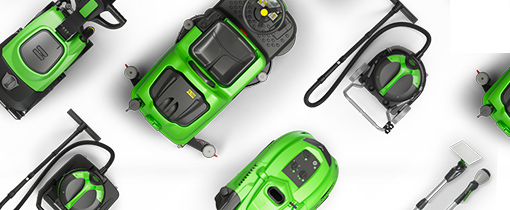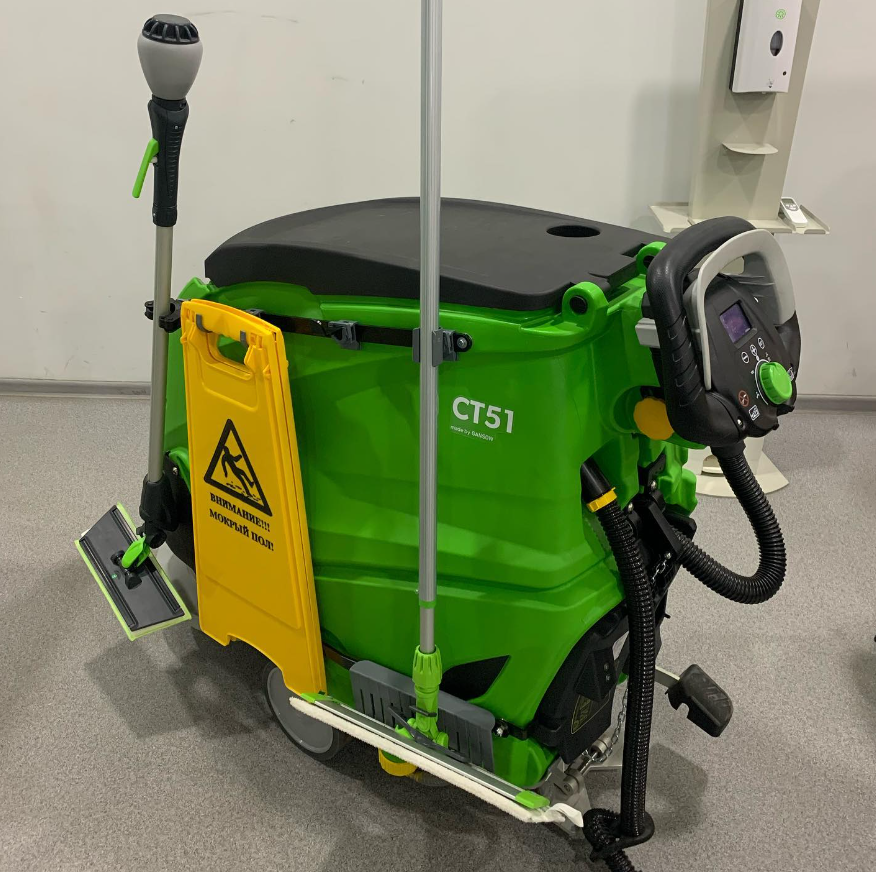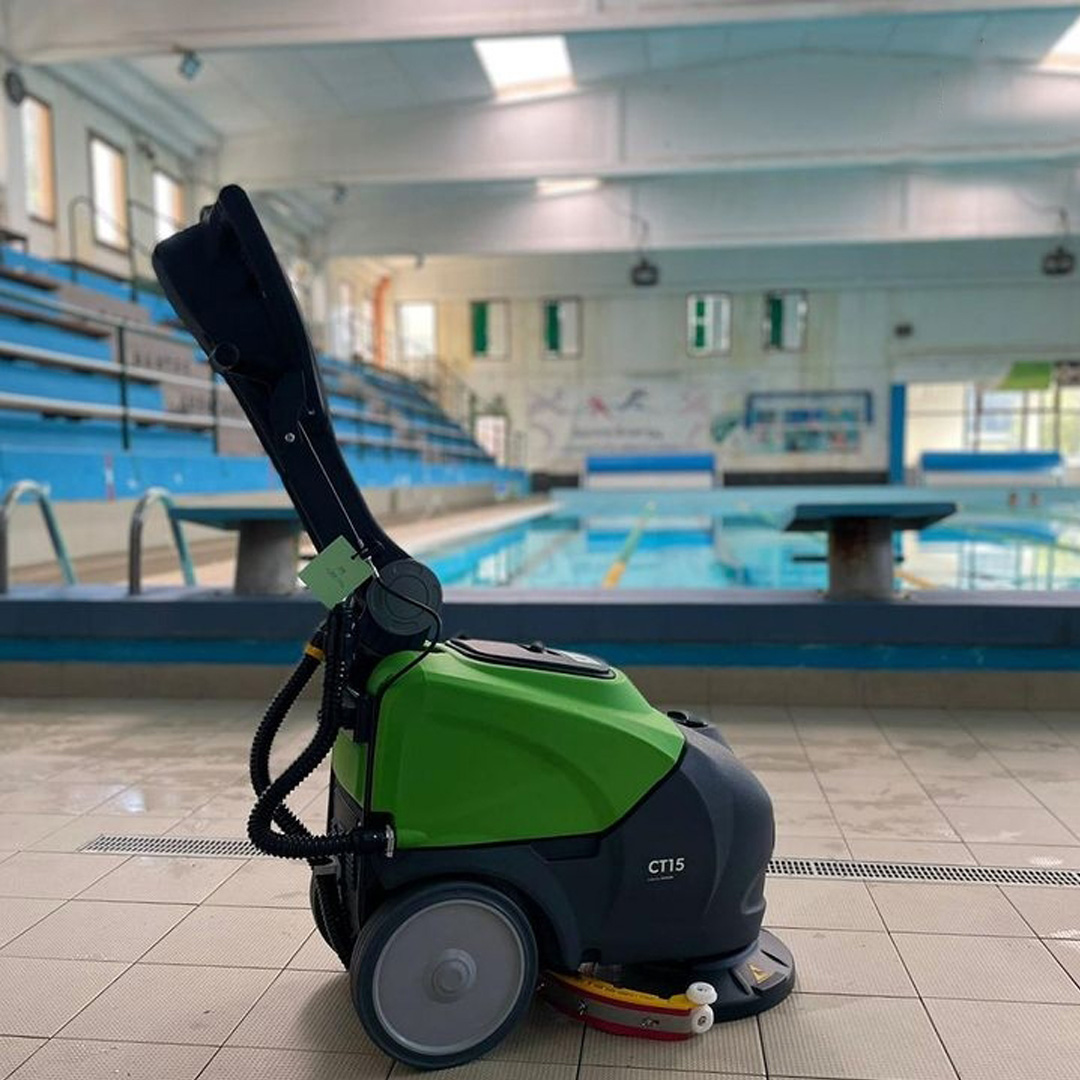
Facilities management teams are under growing pressure to maintain safe, clean and welcoming spaces, often with fewer staff, tighter budgets and stricter compliance requirements. According to the 2024 CMM In-House/Facility Management Benchmarking Survey, nearly a third of cleaning managers cite employee health and safety as their top concern, followed closely by training and staff retention.
Labour also remains the biggest cost driver for most teams, with over half of respondents allocating more than 50% of their operating budget to staffing. As demands continue to rise, outdated equipment and purely manual methods make it increasingly difficult to keep pace.
If your cleaning plan hasn’t evolved to meet today’s challenges, it could be costing you more than you realise. Here are five warning signs to watch for and what you can do about them.
1. When manual cleaning equipment isn’t enough on their own
Mops and buckets have long been trusted essentials in any cleaning routine: reliable, familiar, and highly effective for quick touch-ups or smaller areas. However, as cleaning standards evolve and facilities become busier, these traditional cleaning tools can often be complemented by more advanced solutions to achieve greater efficiency and consistency.
2. Staffing challenges impact consistency and efficiency
If your staff are constantly playing catch-up, you’re not alone and the problem goes far beyond simply hiring more people. Burnout, skill gaps and high turnover make it difficult to build a stable, experienced team. According to IBISWorld, the cleaning industry experiences turnover rates of between 200% and 400% in normal conditions, far exceeding those of most other sectors.
When you’re caught in a cycle of rehiring and retraining, consistency suffers. For cleaning teams expected to deliver high standards every day, cleaning machines such as scrubber dryers and sweepers can make a significant difference by easing the physical workload and helping to standardize results across shifts and staff.
3. Floors are wet and slippery
A floor shouldn’t take hours to dry. Yet with traditional methods, this is often the case and every minute a floor remains wet increases the risk of slips and falls. According to the 2024 Liberty Mutual Workplace Safety Index, slips, trips and falls on the same level are among the top five causes of serious workplace injuries, costing US businesses nearly £8.5 billion annually in direct costs alone.
Cleaning machines such as the i-mop® Lite and the i-mop® XL Plus are designed to recover water as they work, leaving floors safe and dry almost immediately. With separate tanks for clean and dirty water, they also help reduce cross-contamination, helping facilities meet higher health and safety standards. The result? A cleaner environment, fewer hazards, and one less worry during a busy shift.
4. Lack of visibility on cleaning activities
Today, facility managers are not only required to clean, but also to prove it. However, unless you keep track of the equipment used, the frequency and location of use, it is difficult to verify that protocols are being followed. In a world where transparency and audit readiness are more important than ever, this gap can prove costly.
Fortunately, the market is moving to meet demand. According to Global Growth Insights, the global B2B floor cleaning robot market is expected to grow at a compound annual growth rate (CAGR) of 16% through 2033. As adoption increases, so do opportunities to bring consistency and accountability to daily cleaning routines.
Modern cleaning machines equipped with built-in monitoring and reporting systems, such as IPC Telematics GPS, offer valuable, data-driven insight into daily operations. They enable facility managers to monitor key parameters, including brush pressure, vacuum and traction motor performance, battery life, and error codes: all in real time. This data helps ensure optimal machine performance, reduces downtime, and supports more informed maintenance and operational decisions.
5. Your equipment isn’t supporting your sustainability goals
More than three-quarters of facility leaders say they’re working toward better sustainability. Yet if your cleaning tools still rely heavily on chemicals, water or disposable materials, it may be time to rethink your approach.
Industrial and commercial cleaning equipment can play an important role in achieving environmental goals. IPC floor scrubbers powered with lithium-ion batteries, for example, enhance energy efficiency and operating autonomy. When sustainability is a core business priority, your cleaning programme should deliver results that align with those values.
Is it time to re-evaluate?
If one or more of these signs sound you familiar, it may be time to modernise your floor cleaning plan. IPC’s range of cleaning equpiment is designed to help you clean smarter, improve safety and allow your team to focus on what really matters. Contact us to talk with an IPC expert and discover how you can make your cleaning plan more efficient, consistent and sustainable.
Looking for more guidance? Explore these related resources:




